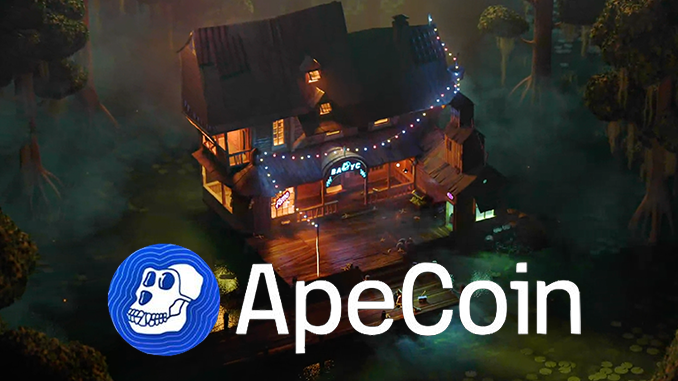
The hype around ApeCoin (APE) and the linked Metaverse Otherside has taken a dip. ApeCoin slides into negative territory for the third day in a row after chaos reigned on Saturday during the first NFT sale for Otherside.
Arguably no other new project in crypto in 2022 is as controversial as ApeCoin (APE): ApeCoin’s stock market debut in mid-March propelled APE straight into the top 50 most capitalized cryptocurrencies – although not much was known about potential uses at the time. The huge attention for ApeCoin stems from the fact that this project is linked to Bored Ape Yacht Club, the most commercially successful NFT collection in 2021. But among the investors who jumped on the ApeCoin bandwagon, there are also many losers as of today. In the final days of April, APE traded above $20 almost consistently, with the price curve peaking as high as $26. Less than a week later, ApeCoin has currently fallen back to around 15 US dollars and has thus suffered a real price crash.
Besides negative tendencies on the overall crypto market, it is NFTs on ApeCoin that are causing disillusionment. It is important to know that ApeCoin is to become the native currency in a planned metaverse Otherside. Otherside was announced in a deliberately secretive manner at the end of March and the starting signal for this metaverse was given on Saturday. In the run-up it became known that there would be virtual properties for Otherside in the form of NFTs to be auctioned. In order to be able to strike there, many interested ones covered themselves with APE. But just one day before the auction, the rules were changed and a fixed price of 305 ApeCoin per NFT was set. As if that wasn’t enough, when the Otherside NFT sale was unlocked, the demand was overwhelming. This then led to willing buyers to also pay horrendous Ethereum transaction fees. These became necessary in addition to the actual price tag in APE because ApeCoin is an ERC-20 token and the NFTs are likewise based on the Ethereum standard.
Ethereum had to cope with ApeCoin moment.
Data from Ultra Sound shows how nearly 56,000 ETH Ethereum transaction fees for Burning came together in connection with Apecoin and Otherside. The volume was several times that of normal trading days for Ethereum, where the bulk of transaction fees mostly come from NFT marketplace OpenSea and decentralized crypto exchange Uniswap. In the hours of NFT sales for Otherside with ApecCoin, Ethereum transaction fees of up to $10,000 were temporarily factored in – this momentum effectively put all other activity in the Ethereum ecosystem on hold due to inefficiencies.
In hindsight, however, the Ethereum community does find some good in the situation: since the transaction fees are partially destroyed (“burned”) automatically, they also have a deflationary effect for ETH. This principle has been in effect on Ethereum since the August 2021 London update with EIP-1559. Thus, there is something positive to be gained from the ETH worth the equivalent of nearly $160 million now withdrawn from the market by ApeCoin and Otherside, with a deflationary effect for Ethereum.
Conclusion: Stormy times for ApeCoin.
Among the so-called metaverse tokens, ApeCoin has so far been able to defend its top spot ahead of Decentraland (MANA) and Sandbox (SAND) despite the price plunge. But shortly after the launch of ApeCoin, there was already serious criticism of the concept of APE, which was ignited by distribution mechanisms and a possibly only feigned self-governance. The reverberations of NFT sales for Otherside are unlikely to classify ApeCoin as solid. On the other hand, the Apecoin / Otherside project is still in its infancy and will still have opportunities to learn from mistakes.

Leave a Reply